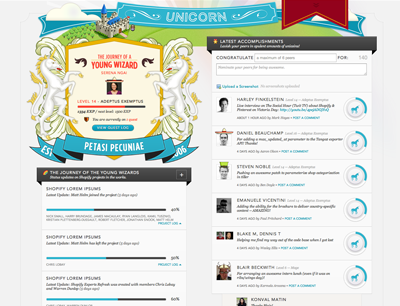Treat others the way you want to be treated. It’s a simple enough concept that long predates any management manual. Yet somehow the notion of treating people like, well, people when it comes to managing them gets lost in the landscape of meetings, memos, and motivational posters.
Is it that power actually gets to people’s heads? Adam Galinsky, a professor of management at Northwestern’s Kellogg School of Management, tested whether there are heady effects. In one study, a group of participants were first primed to feel powerful by writing about a time they felt authority over others. They went on to make more mistakes when guessing the emotional expressions of faces showing happiness, sadness, fear, or anger, compared to the control group.
So the job of managing itself may reduce your ability to empathize and perceive what others are feeling and experiencing. When you lose touch with your team as people, you cause them to feel frustrated, demotivated, and unacknowledged — not only harming relationships but performance as well.
Too many of us have been trained to focus on work, as if it exists in a vacuum, that we forget that fixes aren’t limited to considering and discussing the work itself. Here’s how three companies avoid that trap by putting a priority on treating their employees like human beings.
“I treat everyone how I would like to be treated.”
—Jim Belosic, founder of ShortStack.
 Jim Belosic, the founder of the multimillion dollar startup ShortStack, which helps people create custom apps for Facebook pages, had never had any management training. Instead he’s guided by the Golden Rule as a leader after having had a dehumanizing experience at another company. “I worked my butt off and they didn’t appreciate it,” he told Fast Company. Only allowed half an hour for lunch, he once used his time to get a haircut only to have his manager demand to know why he was eating at his desk.
Jim Belosic, the founder of the multimillion dollar startup ShortStack, which helps people create custom apps for Facebook pages, had never had any management training. Instead he’s guided by the Golden Rule as a leader after having had a dehumanizing experience at another company. “I worked my butt off and they didn’t appreciate it,” he told Fast Company. Only allowed half an hour for lunch, he once used his time to get a haircut only to have his manager demand to know why he was eating at his desk.
Now every Friday, he takes his whole staff out for Friday lunches, happy to foot the extra $3000 per employee a year to do so.

Whether they go out or order in, work talk is off the table so that people can get to know each other and open up the unavoidable cliques that emerge from how often you work with certain people. You can’t know what everyone’s really like “unless you have those opportunities to get to know each other,” he says.
Belosic also tries to sidestep those destructive effects of power by flattening ShortStack’s management structure. He sits at a receptionist’s desk in the middle of the office to stay connected, and title or not, he explains, “If someone needs something from me, I have 12 other bosses. If I need something from them, then I’m their boss.”
Ask: “‘What’s going on in your life?’ That will always remove more hurdles than asking… ‘What’s blocking you at work?’”
—Jason Stirman, Head of People Operations at Medium
 When Jason Stirman headed up a team at Twitter before he landed at Medium, he tried all the stereotypical management advice like not getting too friendly with his reports and asking them what’s blocking progress — and it never resonated. He decided to focus on people first instead of their work first, spending time with them one-on-one, taking them out to lunch and coffee, not to talk about tasks but about what was going on in their lives.
When Jason Stirman headed up a team at Twitter before he landed at Medium, he tried all the stereotypical management advice like not getting too friendly with his reports and asking them what’s blocking progress — and it never resonated. He decided to focus on people first instead of their work first, spending time with them one-on-one, taking them out to lunch and coffee, not to talk about tasks but about what was going on in their lives.
Stirman was surprised to find that setting aside the work at the outset was the secret to actually getting to the issue.
“Whenever problems popped up, I’d totally ignore them and pay attention to the people who had them. Suddenly all these issues were just dissolving. I swear it was like a Jedi mind trick.”
When Stirman had people who by all accounts were like oil and water and couldn’t work together, he just got them to talk about everything except work:
“[W]e got some casual conversation going, they discovered some similarities, and by the end of the hour they were talking about how to solve their issues. This was a conflict that literally kept me up at night, and as soon as there was space for them to connect as people, it was fixed. I thought, holy crap, this is a super power.”
Asking “What’s going on in your life?” rather than “What’s blocking you at work?” turned out to be the magic key to the management engine that had been stalling. You carry your whole life around in your head no matter how much you might pretend to have a work self and a self-self, and issues of family, health, money, and just plain living take up space no matter where you are.
“You’re managing people who have lives,” Stirman notes. When there’s a problem at work, a critical part of the solution can require setting aside the work and paying attention to those lives.
“A company already knows more than the managers.”
— Tobi Lutke, CEO Shopify
 While Stirman finds the manager’s framing of “reports as resources” dehumanizing, Shopify goes right ahead and refers to its HR department as “human relations” rather than “human resources.”
While Stirman finds the manager’s framing of “reports as resources” dehumanizing, Shopify goes right ahead and refers to its HR department as “human relations” rather than “human resources.”
With almost 300 employees, taking everyone out to lunch for personal connection isn’t quite viable (although the staff does get lunch catered every day). As companies like Shopify scale, managers inevitably lose that immediate knowledge of what’s going on every day, and so the folks at Shopify unleashed the wisdom of its crowd.
Every month, each employee gets an allotment of the company’s bonus pot of profit — but they can only distribute it to other people. With an internal system called Unicorn, when you accomplish something awesome or spend some time helping me figure out a bug, for example, I can thank you by going into the system and giving you one, two, or three unicorns. So at the end of the month, part of my bonus allotment goes to you and anyone else I’ve given unicorns.

The system puts power back into the hands of the people who have the most knowledge about both the work and the people who made it happen. Rather than inadequate top-down evaluations or the disconnection of automatic bonuses, Shopify came up with a way to both engage and gain valuable knowledge from its employees.
The result is that people gain the recognition they deserve. Take the case of one Shopify employee who wasn’t being effective at his projects. When managers checked his unicorns though, it became clear that the reason behind his supposed weak performance was that he was actually spending most of his time helping others — to the point where he got the second largest bonus that month.
Rather than shooting that kind of behavior down, Shopify’s CEO Tobi Lutke sees its value, “This was his own way to integrate into the company and it was tremendously useful.” Shopify’s management was able to see a more complete picture of not just who this employee is and how he was contributing, but the higher-level needs of the company and the role that he was filling in that context.
For Shopify, that rounded, three-dimensional knowledge is the essence of treating people like human beings. “In a way, a company already knows more than the managers, and there are ways to tease those out. I think this was something on the right side of history in terms of human relations.”
What’s one tactic you know to put people first that ultimately boosts performance? Share your wisdom in the comments!
Liked this post? Subscribe to our free newsletter for more great content on management, productivity, and company culture!
